This restaurant opened in September 2022 on the first floor of the Hotel Café Royal on Regent Street. This venue was first opened in 1865 by a French wine merchant and by the 1890s had become one of the trendiest spots in the capital, serving the likes of Oscar Wilde and Winston Churchill and a host of later celebrities and royals, before eventually closing in 2008. In 2012 it reopened as a hotel with suites and various dining rooms and bars, the most recent being the eponymous Alex Dilling restaurant. Head chef Alex Dilling was born in London but was raised in the USA, trained under Alain Ducasse at his New York restaurant Adour and gained a star for Caviar Russe in 2013. He then moved to London to work with Helene Darroze where he became executive corporate chef. Alex later became executive chef of two Michelin star The Greenhouse in 2018 before its bankruptcy in 2020. His new restaurant offered a set lunch at £65, with tasting menus at £155 and £195. The dining room seats up to around 30 guests at one time, with a dozen chefs in the kitchen. It had well-spaced tables, the white décor complemented by an attractive flower display. Window tables looked out over Regent Street.
The wine list had 422 labels and ranged in price from £40 to £9,500, with an unusually high median price of £187 and an average markup to retail price of 3.3 times, which was high though these days not exceptional for Mayfair. There were 38 wines under £75 and fully 77% of the list was French, though there were selections from as far afield as Morocco and Luxembourg. Sample references were Domaine Naulin Petit Chablis 2021 at £65 for a bottle that you can find in the high street for £14, Chapel Down Kit's Coty Vineyard Chardonnay 2015 at £85 compared to its retail price of £32, and the very pleasant Vina Ardanza Rioja Reserva 2015 at £115 for a wine that will set you back £29 in the high street. For those with the means there was Mayacamas Vineyards Cabernet Sauvignon 2008 at £350 compared to its retail price of £70, and Bolgheri Superiore Ornellaia 2013 at £635 for a wine whose current market value is £216. There were actually nine wines below their current retail price, though pretty much all of these were at the very elevated end of the list. On the other hand. there were 17 wines more than six times their retail price, and there were three wines over ten times their current market value. Corkage was £100 per bottle with a maximum of two bottles however many diners at your table, a particularly unfriendly policy to any groups who want to bring their own wine. To rub it in, there is no corkage option for anyone taking the set lunch. A restaurant needs to make some money on its wine for sure: you are paying for stemware, washing up and capital costs of acquiring a list, but the combination of high markups and the priciest and most restrictive corkage I can recall in London will not endear this place to wine lovers.
Initial cold canapes included a tartlet of smoked mackerel terrine topped with caviar, a piperade and a modern take on bouillabaisse These were attractive dishes with good quality ingredients (16/20). A hot canape was a version of tartiflette, the potato, cheese, lardon and onion dish from Savoy in the French alps. Here it was deconstructed to a degree, with the fat served in the form of a separate glass of consommé flavoured with fat. The potato itself was lovely, its earthiness balancing the richness of the cheese nicely (17/20).
A display of breads was brought to the table, including a baguette and a country bread using sourdough. These were fine but the star was a superb onion brioche, with had lots of delicate layers and terrific texture. This was followed by the first formal course of the meal, a cup with a series of food layers within it. At the base was a bavarois (set custard) of Fine de Claire oyster. Above this was oyster tartare seasoned with ginger and spring onion, followed by a layer of Kaluga Hybrid caviar from supplier N25. On top of the caviar was smoked crème fraiche, with a final spoon of three months aged Kaluga caviar. It was a lovely series of textures, the hint of ginger bringing a nice aromatic touch to the dish (17/20).
Also impressive was a dish of Cornish sardines with cultured buttermilk bavarois (set cream). The sardines had been cured and lightly pickled. At the base of the dish was a clear bavarois, on top of which was “perle” of vinaigrette made from stock of the sardine heads and roasted sardine bones. This had pearls of buttermilk and cuttlefish ink, confit cuttlefish and finally a trio of pieces of sardine.
This was a very pretty dish with the sardine stock bringing deep flavour, while the sardines themselves had excellent texture, the vinegar from the curing process offsetting the natural oiliness of the fish. It always impresses me when a chef can take a relatively humble ingredient like a sardine and produce something special from it, as in this case (18/20).
A take on the classic pate campagne of France featured pate that had been stuffed with boudin noir (blood sausage) made from Iberico pork and glazed with mushroom consommé. This was accompanied by a little sphere of Andigac foie gras from the Landes region, all resting in a pool of mushroom consommé that was seasoned with Xeres vinegar and preserved black truffle. On the side was lightly pickled cucumber and also a dish of honey truffle mustard, with a separate crisp bread rendered on lardo fat to go with the pate. This sophisticated take on a relatively humble dish worked very well, with the pickled cucumber and the mustard nicely balancing the richness of the pate (17/20).
Next was a take on the American dish clam chowder, but here with Dorset clams, confit potato glazed in crème fraiche, razor clams, cockles and caviar, seasoned with Sarawak pepper. This all rested in a pool of clam veloute rather than the dish being presented as a soup. The pepper nicely lifted the flavour of the clams, with the caviar bringing an air of luxury (17/20).
Calf sweetbread from Limousin in south-central France was initially cooked in a court bouillon and then slowly pan-roasted and glazed with their own jus. This was served with stoneground polenta, veal jus seasoned with caramelised lemon and a sabayon made with 2 year aged Comte. On the side was a dish of ceps (from Poland) cooked simply in olive oil with a little parsley. The sweetbread was good and the sauces very well made, but the star of the show was actually the dish of ceps. These mushrooms were absolutely dazzling in flavour, precisely cooked and providing a lovely earthy foil to the richness of the sweetbread (17/20; higher for the ceps).
Turbot was coated in a parsley gelee and cooked in a vin jaune sauce, served with grey shrimp, diced lardo and Parisienne gnocchi (made with choux pastry). The turbot’s cooking process resulted in a texture that I am not sure compared well to precise pan-roasting, and the overall effect was a fish that tasted to me just a little bland. The dish elements were fine in themselves but the overall effect just seemed to lack quite the depth of flavour I had expected. The fish was also not quite hot by the time it arrived (barely 15/20).
A little tableside theatre followed with a dish “en vessie” i.e. cooked in a pig bladder. This is always a spectacular affair, and in this case had whole French quail from the Vosges region cooked in the bladder, which was cut open and deboned at the table. The bird was then stuffed with foie gras and black trompette mushrooms, and a light jus of the quail flavoured with Cognac and salted butter, and sauce blanquette (stew in a white sauce) the quail garnished with new season white truffle. I am a big fan of quail and the nice thing here was the sheer quality of the bird, in a different league from the British farmed ones that often appear on tables in London. The cooking was precise, the sauce was genuinely lovely and the scent of the white truffle elevated the dish to a higher level (easily 18/20).
The final savoury course was mallard pithivier with foie gras, using a milk dough pastry and the game meat enhanced by lardo di colonatta (cured pork fat). The mallard was enhanced with smoked duck, diced foie gras, roasted cep, Armagnac and five spice. Some much-needed balance to the richness was provided by a bitter leaf side salad with a pleasingly sharp dressing, the slices of pithivier served with juniper smoked jus flavoured with Armagnac. The meat had excellent flavour and the pastry was very well made, the sauce richly flavoured (easily 17/20).
In place of a cheese course was a pretty dish of Swiss Gruyere d’Alpage alpine cheese a condiment made with Sollies fig from Provence, toasted sourdough bread and baby romaine lettuce. Although this was a visually appealing dish, the cheese itself for me was not really as interesting in flavour as a good traditional gruyere, though of course that is just a matter of personal taste.
Pre dessert was lemon balm sorbet with crisp lemon balm leaf and olive oil from Provence. This had very smooth texture and a nice level of citrus acidity; a refreshing pre-dessert (16/20). The main dessert was a pretty dish of Jura hazelnut praline caramel on a hazelnut shortbread base with Tahitian and Madagascan vanilla flavoured Chantilly cream and a quenelle of vanilla ice cream with brandy sabayon. The vanilla was certainly of very good quality and it was a pretty dish to look at, but for me the dish seemed just a little one dimensional, much as I like both vanilla and hazelnuts (16/20).
The meal concluded with mignardise, the best of which was a lovely lime financier. A caramelised chocolate was fine but a chocolate tart had pastry that had become a little soggy. Service was good and dishes arrived at a steady pace throughout this elaborate tasting menu. The bill came to £326 per person, including corkage. A typical bill for the shorter tasting menu, assuming modest wine, might come to around £200, though there is also the much cheaper set lunch option.
Overall, this was an impressive meal that demonstrated a high level of culinary skill married to top quality ingredients, with dishes that showed fine classical technique but also inventiveness. There were a few things that could be tweaked, but even after a few weeks in operation the kitchen is already operating at a very high level.































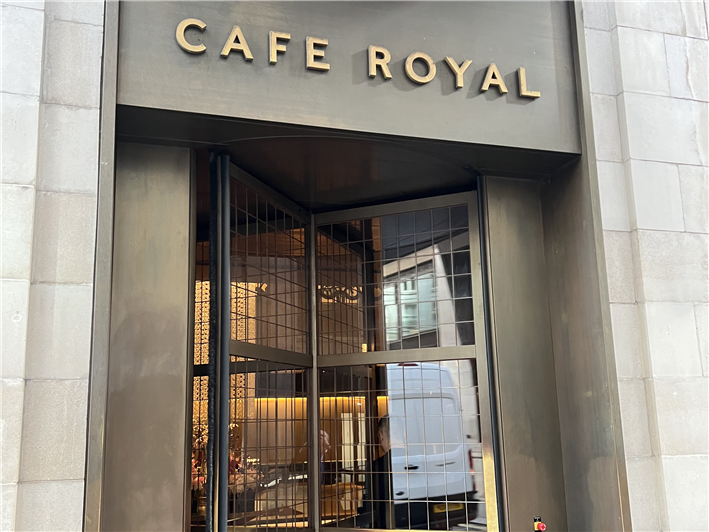

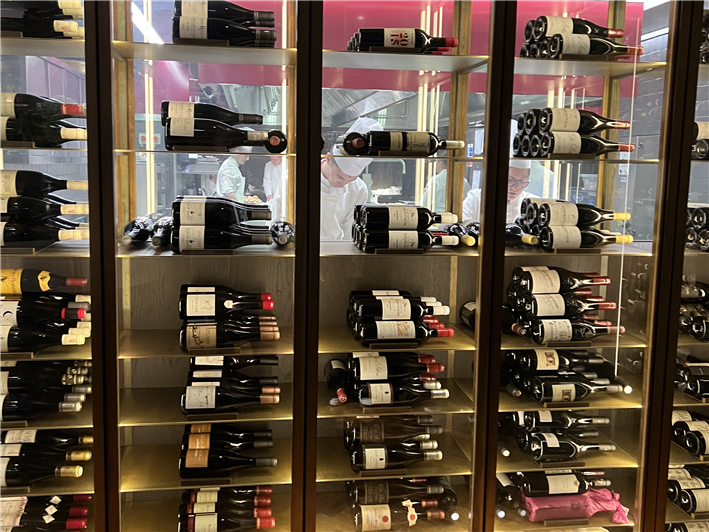
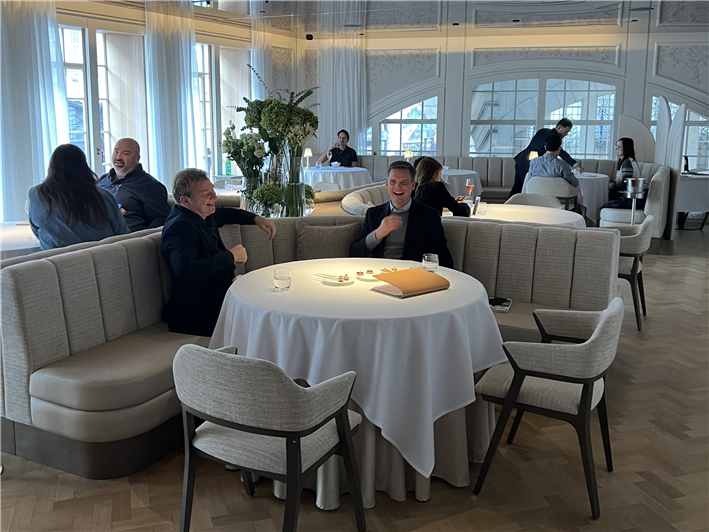
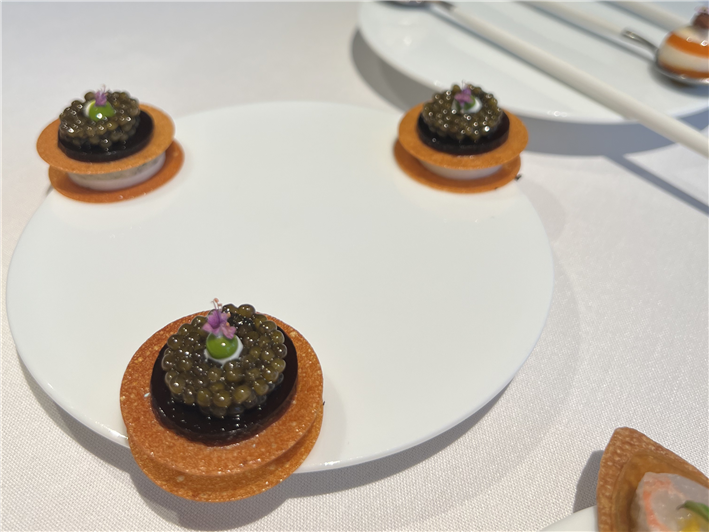
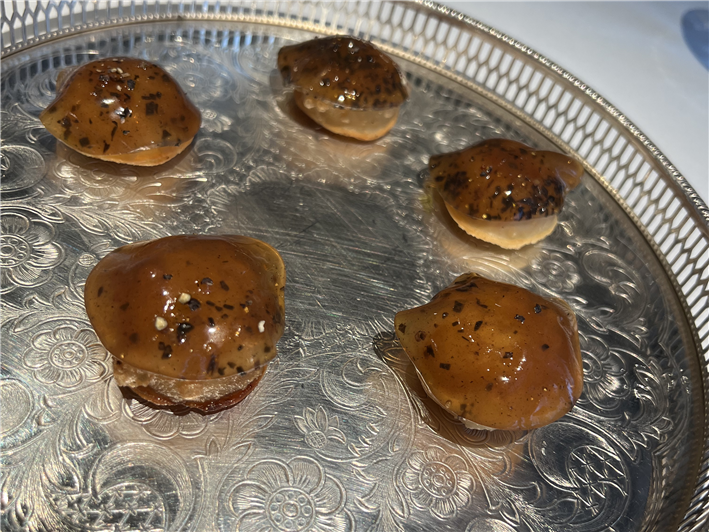

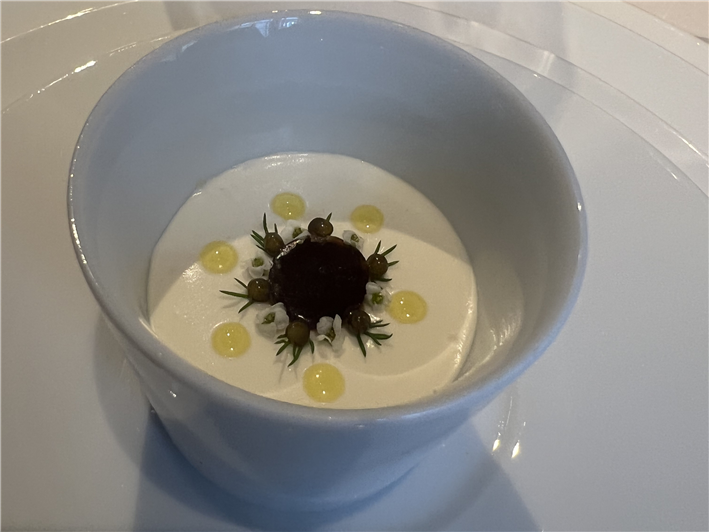
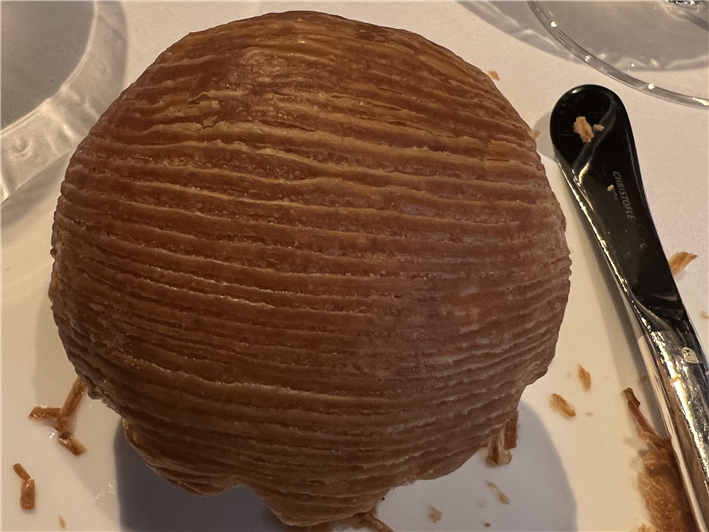
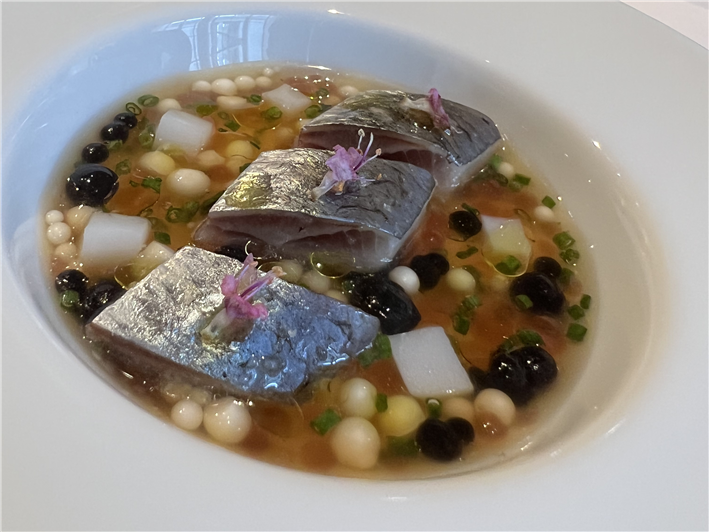
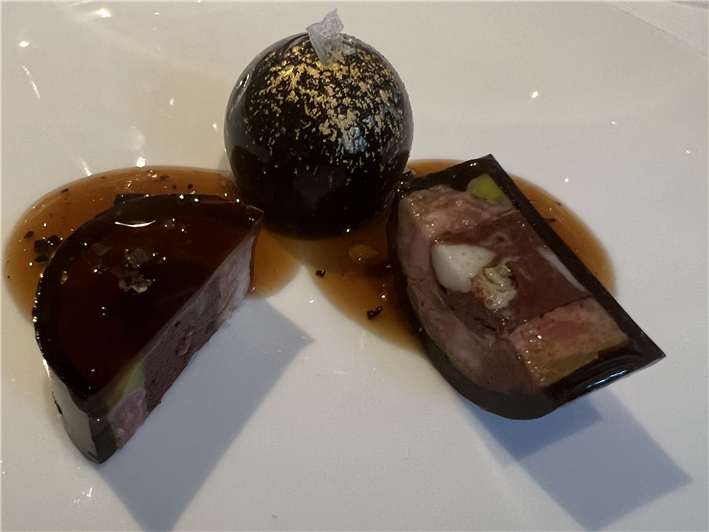


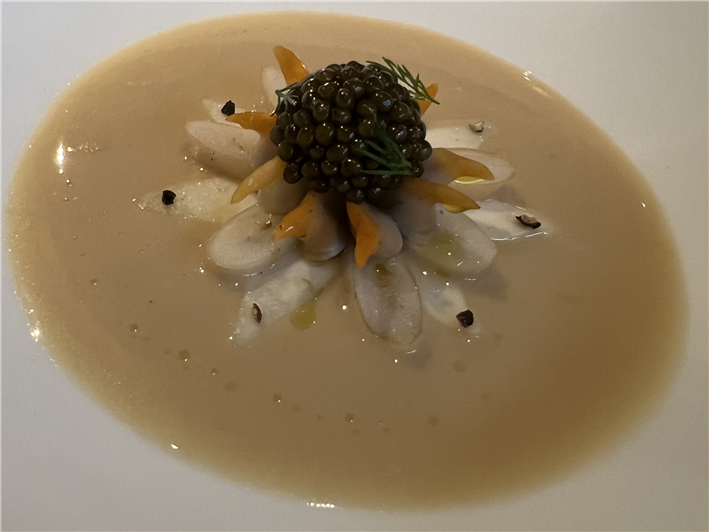
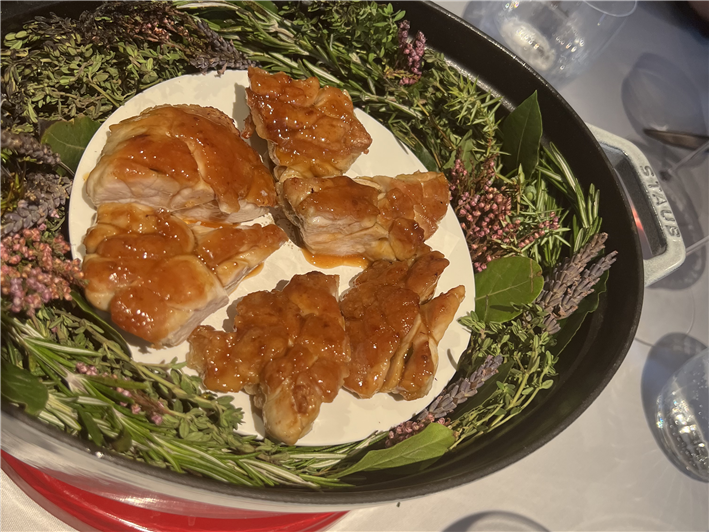
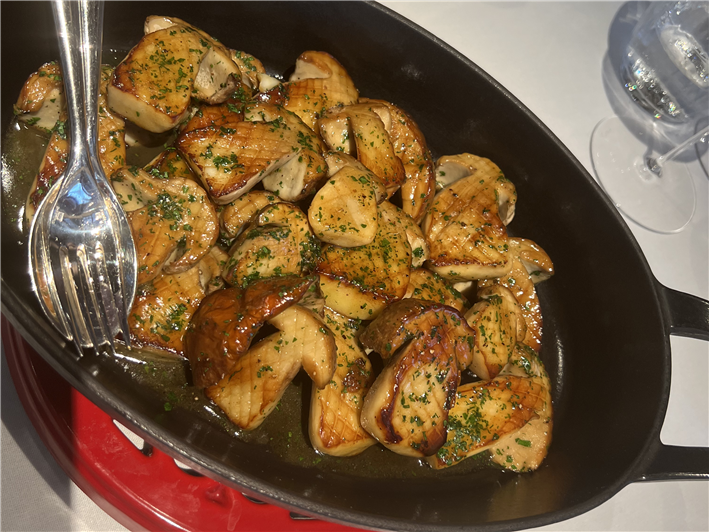

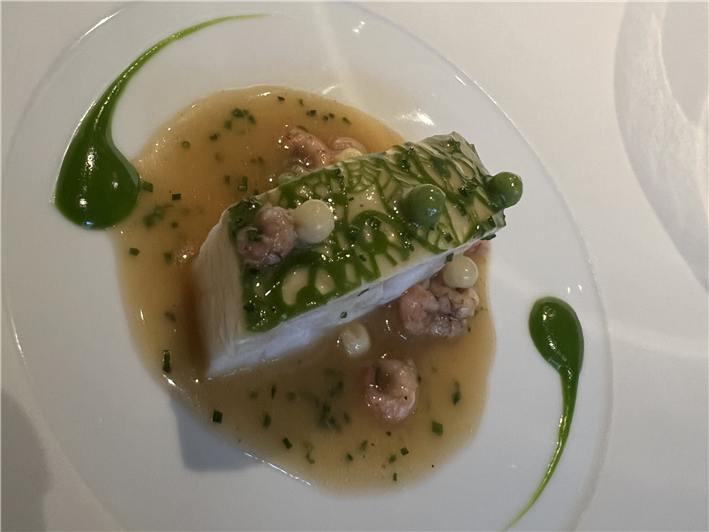
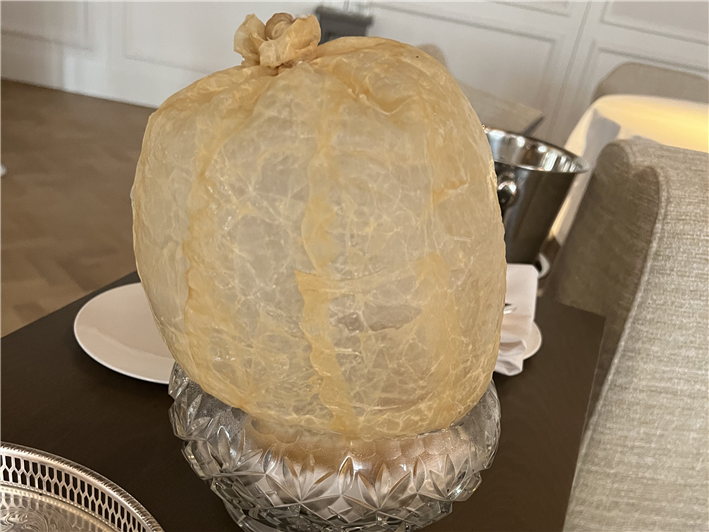
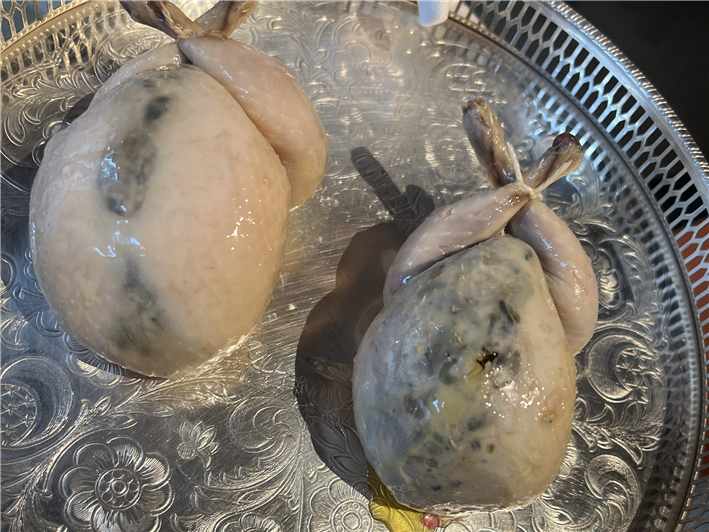
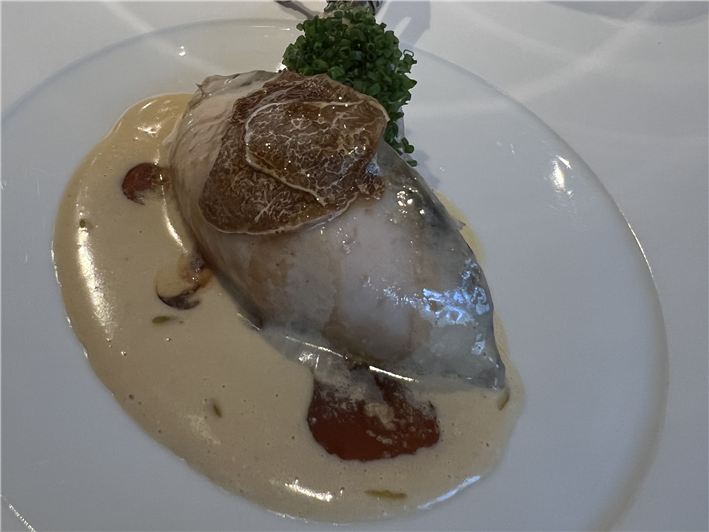


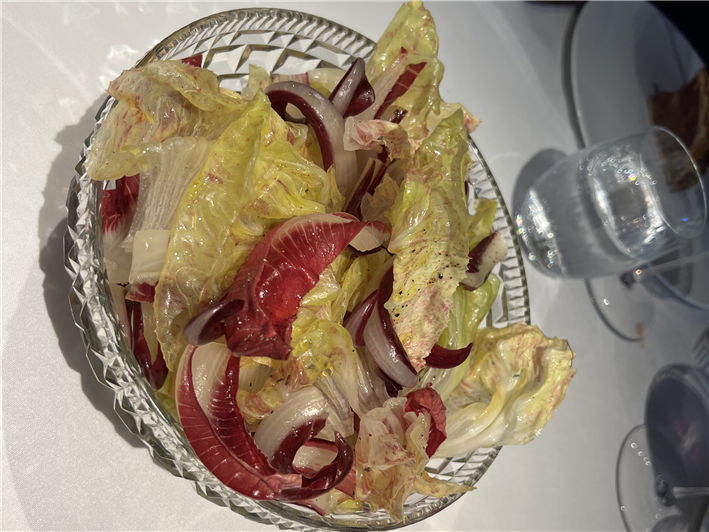
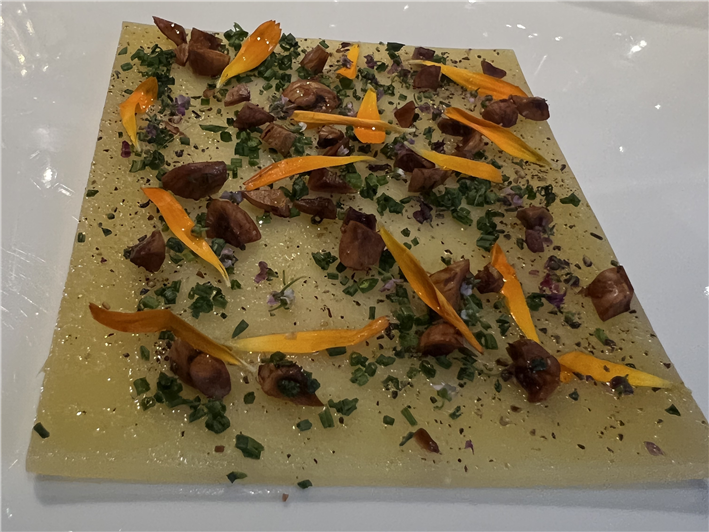
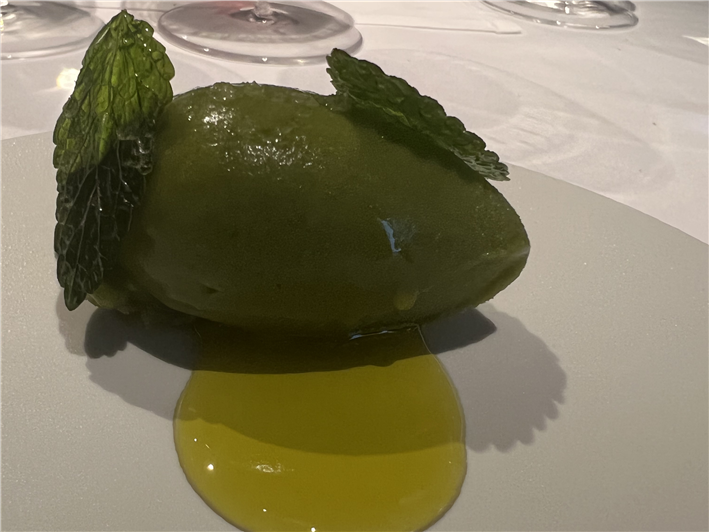





Penny
I went when the restaurant was newly opened. VERY pretty food but a real "style over substance" experience. The Chef's recent comments about higher prices for single diners are deeply offensive and as the food is not as great as he thinks it is I will never return.
Mark Humble
We had the seven course tasting menu last week, the last chance to try it at £175 before the price goes up to £195 after the short summer break. Andy, your review was an excellent read as always, and it persuaded us to go, but you seem to have had a much better meal than us, not only in the quality of the food but also in the number of dishes. We also had the pâté de campagne (17/20) but the other dishes were different, including blue lobster with Cornish squid,Thai basil and Bayonne Ham (17/20); turbot with Australian black truffle, hazelnut and smoked butter (15/20, with the texture and flavour of the turbot disappointing and exactly as you described); and duck with girolle and foie gras “farcie” (an excellent sauce and a very good “farcie” but although the duck meat itself was perfectly cooked, the fat hadn’t been rendered down and the skin wasn’t crisp and so for me was inedible, so 15/20). The wine pairing was £145 pp and as good as could be expected given the now common high markups, but the first course had arrived without our being asked if we wanted any wine and we had to ask for the sommelier. We also found it odd that the wine wasn’t poured at the table, but out of sight behind the bar. The total bill came to £800, including two glasses of champagne and 15% service charge. 15/20 overall and I’m now looking even more to getting back to The Ritz later this week.
Adrian Turner
Although I go out of my way to avoid multi-course tasting menus, I must say this looks pretty spectacular and one of the very few London restaurants I'd be keen to visit. Thanks for this enticing review, Andy. I would also like to add that fancy wines or indeed any wine seems fairly pointless to accompany these sorts of menus. Frankly, I'd prefer a bottle of Gaviscon.
John
Another super review - thank you the corkage of £100 is not encouraging